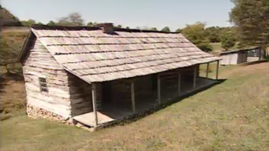Teachers' Domain - Digital Media for the Classroom and Professional Development
User: Preview



In this video segment from the KET series Kentucky Life, host Bryan Crawford visits the Hensley Settlement in the Cumberland Gap National Historic Park. Park Ranger Matthew Graham guides Crawford on a tour of the Hensley Settlement while discussing the unique history of this pioneer community.
Find additional arts resources for your classroom at the KET Arts Toolkit website.
The Hensley family settled atop Brush Mountain in 1904, forgoing settled areas to create their own self-sufficient lifestyle. Their settlement in rural Appalachia continued without electricity, indoor plumbing, roads, or any modern conveniences until the last inhabitant left in 1951. The Hensley family shared their settlement with the Gibbons family; the two families became intertwined with one another.
The Hensley family settled on a high plateau straddling Kentucky and Virginia, where they lived 18th-century lifestyles in isolation for the first 50 years of the 20th century. The settlement began in May 1903, when “Gabby Burt” Hensley purchased 500 acres of Cumberland Mountain land and subdivided it into 16 parts for his principal heirs. Gabby Burt’s daughter, Nicy Ann, and her husband, Sherman Hensley, bought 38 more acres and moved up Brush Mountain in December 1903. The families built a schoolhouse in which the Hensley and Gibbon children received their formal education. At its peak, the school housed about 25 students. On the weekends, the schoolhouse doubled as a church. When the school closed in 1947, only four students remained.
Almost everything the Hensleys needed to survive was made on Brush Mountain. They were amazingly self-sufficient and seldom had any reason to leave their private settlement. After everyone else deserted the Hensley settlement, Sherman Hensley lived alone there for two years. In 1951, Sherman, age 70, left the mountain the way he had found it 50 years earlier: with no electricity, no roads, and no people.
Today, the Hensley Settlement stands as part of the Cumberland Gap National Historic Park. Approximately 25 of the original buildings have been restored, and the surrounding land has been returned to the picturesque farming and pasture scene of its initial appearance. It is a truly unique place to visit in Kentucky that transports its visitors back to a simpler time.
 Loading Standards
Loading Standards